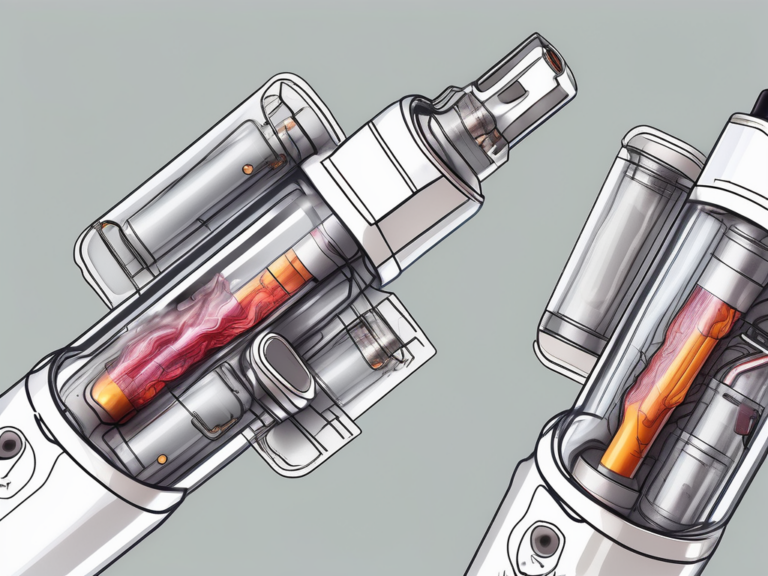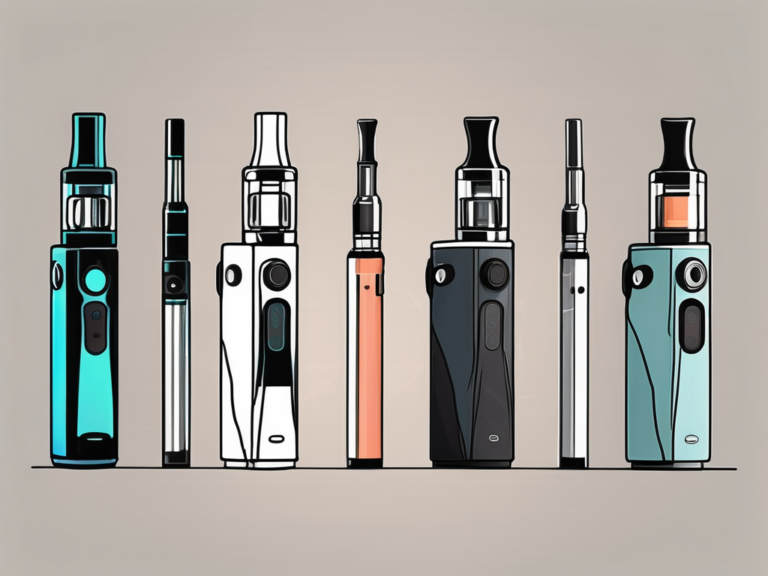what happens if a 11 year old vapes
Vaping has become a prevalent trend among young people in recent years. Many children and adolescents find themselves drawn to it due to various factors, including social influences and curiosity. However, it is crucial to understand the potential consequences of vaping, especially for an 11-year-old. In this article, we will delve into the physical and psychological effects of vaping on a young person, the legal implications surrounding underage vaping, and effective prevention and intervention strategies.
Understanding Vaping and Its Popularity
Vaping, or the use of electronic cigarettes, involves inhaling and exhaling aerosol produced by heating a liquid that usually contains nicotine, flavorings, and other chemicals. This practice has gained significant popularity, particularly among youth, for several reasons.
The Basics of Vaping
Before we further explore the implications, let’s familiarize ourselves with the essentials of vaping. Electronic cigarettes consist of a mouthpiece, a battery-powered heating element, and a cartridge or tank containing the e-liquid. When the device is activated, the e-liquid is heated, creating an aerosol that is then inhaled into the lungs.
Vaping devices come in various shapes and sizes, ranging from sleek pens to larger mods. These devices are often customizable, allowing users to adjust factors such as temperature and airflow to suit their preferences. Additionally, the e-liquids used in vaping can vary in nicotine strength, catering to both those looking to quit smoking and individuals simply interested in the experience.
Why Vaping Appeals to Young People
One reason why vaping attracts young individuals is its portrayal as glamorous and appealing in popular culture. Advertisements often present vaping as a cool and trendy activity, making it alluring to impressionable young minds. Moreover, the availability of various flavors, including fruity and dessert-inspired options, can make vaping seem enjoyable and harmless.
Furthermore, the social aspect of vaping plays a significant role in its popularity among youth. Vape shops and lounges provide spaces for young people to gather, socialize, and bond over their shared interest in vaping. This sense of community and belonging can be particularly appealing to adolescents and young adults seeking connections with like-minded individuals.
The Physical Effects of Vaping on an 11-Year-Old
Vaping can have detrimental effects on both the short-term and long-term health of an 11-year-old. Let’s explore these effects in detail.
It is crucial to understand that the impact of vaping on an 11-year-old’s body goes beyond just the immediate symptoms. The long-term consequences of exposing a young individual to e-cigarettes can be severe and life-altering. By delving deeper into the physiological effects, we can paint a clearer picture of the potential harm caused by this habit.
Impact on the Respiratory System
Engaging in vaping at such a young age can lead to respiratory issues. The inhalation of aerosol can irritate and inflame the airways, causing symptoms such as coughing, wheezing, and difficulty breathing. Prolonged exposure to the chemicals present in e-cigarettes can potentially harm lung development, leading to chronic respiratory problems later in life.
Furthermore, the presence of harmful substances like formaldehyde and acrolein in e-cigarette vapor can cause damage to the delicate tissues of the respiratory system. These toxins can trigger inflammation and oxidative stress, paving the way for respiratory infections and diseases. The young and developing lungs of an 11-year-old are particularly vulnerable to such assaults, making the impact even more profound.
Effects on the Cardiovascular System
The nicotine found in e-cigarettes can have adverse effects on the cardiovascular system, even for young individuals. Nicotine raises blood pressure and heart rate, putting extra strain on the heart. This increased cardiovascular stress can have long-term implications, particularly in individuals still in the early stages of development.
Moreover, the combination of nicotine and other chemicals in e-cigarettes can contribute to the formation of arterial plaques, increasing the risk of cardiovascular diseases such as atherosclerosis and heart attacks. The 11-year-old’s heart, which is still growing and maturing, may suffer irreversible damage from the constant exposure to these harmful substances, setting the stage for cardiovascular complications later in life.
Influence on Brain Development
One of the most concerning aspects of vaping at such a young age is its potential impact on the developing brain. The human brain continues to develop until the mid-20s, and exposure to nicotine during this critical period can disrupt normal brain function. This interference can impair cognition, attention, and learning abilities, potentially leading to long-term consequences for educational and personal growth.
Additionally, the nicotine in e-cigarettes can alter the levels of neurotransmitters in the brain, affecting mood regulation and increasing the risk of mental health disorders. The developing brain of an 11-year-old is highly susceptible to these neurochemical changes, which can have profound effects on behavior and emotional well-being. By jeopardizing the intricate processes of brain development, vaping poses a significant threat to the overall health and future of a young individual.
The Psychological Consequences of Vaping at a Young Age
The negative effects of vaping are not limited to the physical realm. A young person who starts vaping at 11 years old may face various psychological challenges.
It is crucial to understand that the impact of vaping on mental health goes beyond just physical health concerns. The addictive nature of nicotine, commonly present in e-cigarettes, can have profound implications on a young individual’s psychological well-being. The allure of vaping, especially at a tender age, can quickly spiral into a full-blown addiction, leading to a constant craving for nicotine that can disrupt daily life and routines.
Addiction and Dependence
Nicotine, an addictive substance found in most e-cigarettes, can quickly lead to dependence. The younger an individual begins using nicotine, the higher their risk of developing an addiction. This can have significant implications for their future health and well-being.
Moreover, the cycle of addiction can be mentally taxing, causing feelings of helplessness and frustration as the individual struggles to break free from the grip of nicotine. The psychological toll of dependence can manifest in various ways, impacting self-esteem, relationships, and overall mental resilience.
Mental Health Concerns
Engaging in nicotine use during adolescence has been correlated with an increased risk of mental health disorders. Scientific studies suggest that nicotine can alter brain chemistry and contribute to the development or exacerbation of conditions such as anxiety and depression.
Furthermore, the link between vaping and mental health concerns is a growing area of concern among healthcare professionals and researchers. The intricate interplay between nicotine addiction and mental well-being underscores the importance of addressing vaping not only as a physical health risk but also as a potential catalyst for psychological struggles in young individuals.
Legal Implications of Underage Vaping
The legal aspects surrounding vaping under the age of 18 (or 21 in some jurisdictions) are essential to consider.
Understanding the legal implications of underage vaping goes beyond just the immediate consequences. In many cases, individuals who engage in underage vaping may face challenges in the future, such as limitations on educational opportunities or employment prospects. It is crucial for young people to recognize the long-term impact that breaking the law can have on their lives.
Laws and Regulations Surrounding Vaping
Many countries and regions have implemented legislation to restrict the sale and possession of e-cigarettes to individuals below a certain age. These laws are designed to protect the health and well-being of young people and prevent the potential harms associated with nicotine addiction. It is crucial for parents, guardians, and young individuals themselves to be aware of their local laws and regulations regarding vaping.
Additionally, some jurisdictions have introduced specific measures to combat underage vaping, such as increased enforcement efforts and public awareness campaigns. These initiatives aim to educate the public about the risks of vaping at a young age and deter underage individuals from engaging in this behavior.
Consequences of Breaking the Law
Breaking the law by vaping underage can have severe consequences. Penalties can range from fines and community service to mandatory education programs or even criminal charges, depending on the jurisdiction. It is essential to emphasize the importance of adhering to the law and making informed decisions. By understanding the potential legal ramifications of underage vaping, young individuals can make responsible choices that prioritize their health and well-being.
Prevention and Intervention Strategies
To protect the well-being of young people, it is vital to implement effective strategies to prevent and intervene in underage vaping.
Role of Parents and Guardians
Parents and guardians play a crucial role in educating and guiding young individuals away from the temptation of vaping. Open communication, providing accurate information, and setting clear expectations and boundaries can help these influential figures steer their children in the right direction.
School Policies and Education
Implementing comprehensive school policies against vaping and providing education on the harmful effects can raise awareness among young individuals. By equipping them with knowledge and promoting a supportive environment, schools can actively contribute to preventing underage vaping.
Government and Community Initiatives
Government bodies and community organizations must collaborate to develop and implement initiatives that combat underage vaping effectively. These initiatives may include public awareness campaigns, stricter regulations on advertising and packaging, and accessible resources for those seeking help or information.
In conclusion, vaping presents significant risks for an 11-year-old and can have both immediate and long-term detrimental effects. From physical health concerns such as respiratory and cardiovascular issues to psychological consequences like addiction and mental health disorders, the impact of vaping on young individuals cannot be ignored. By understanding these risks, familiarizing ourselves with legal implications, and implementing targeted prevention and intervention strategies, we can work towards protecting our youth from the potential harm associated with underage vaping.






